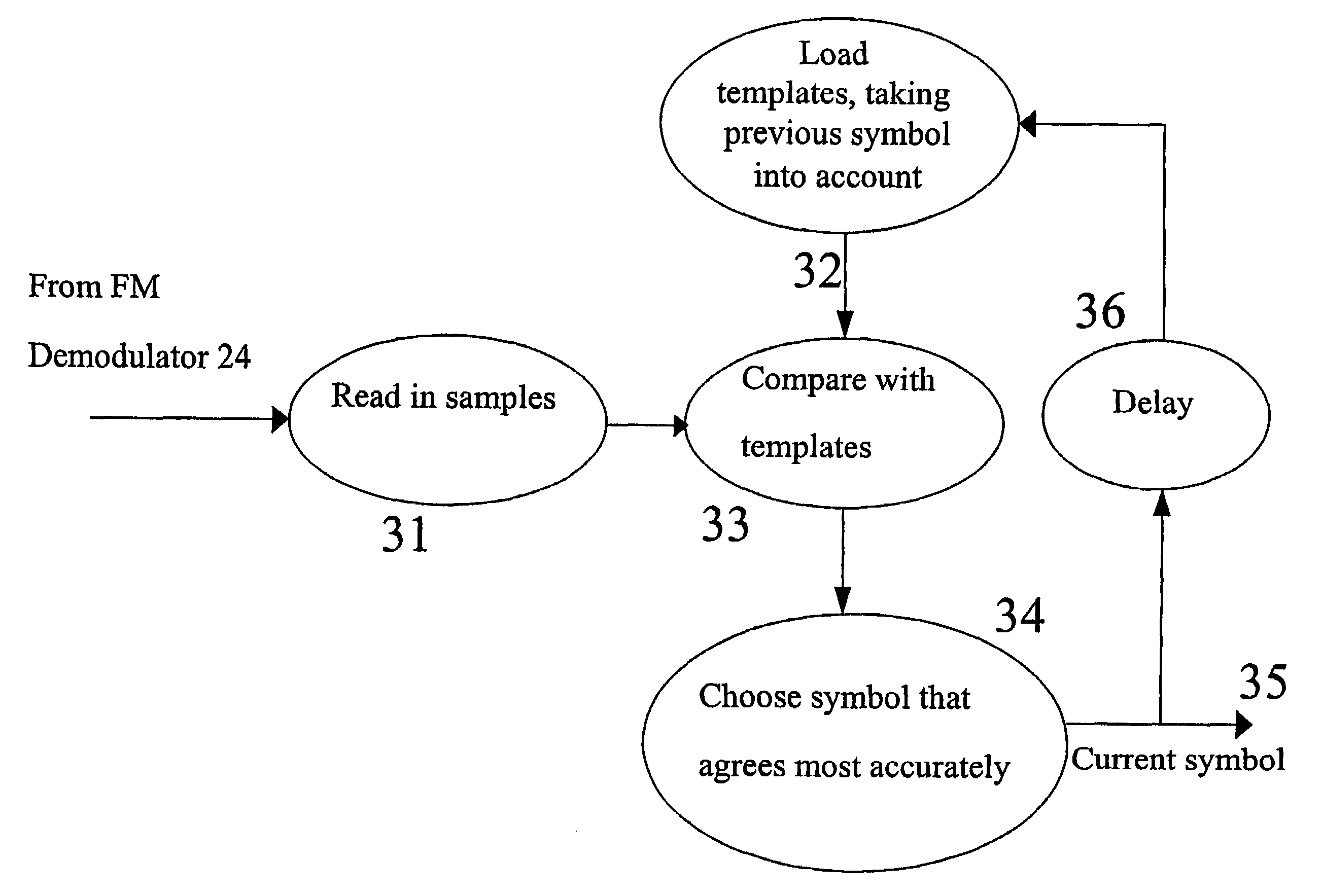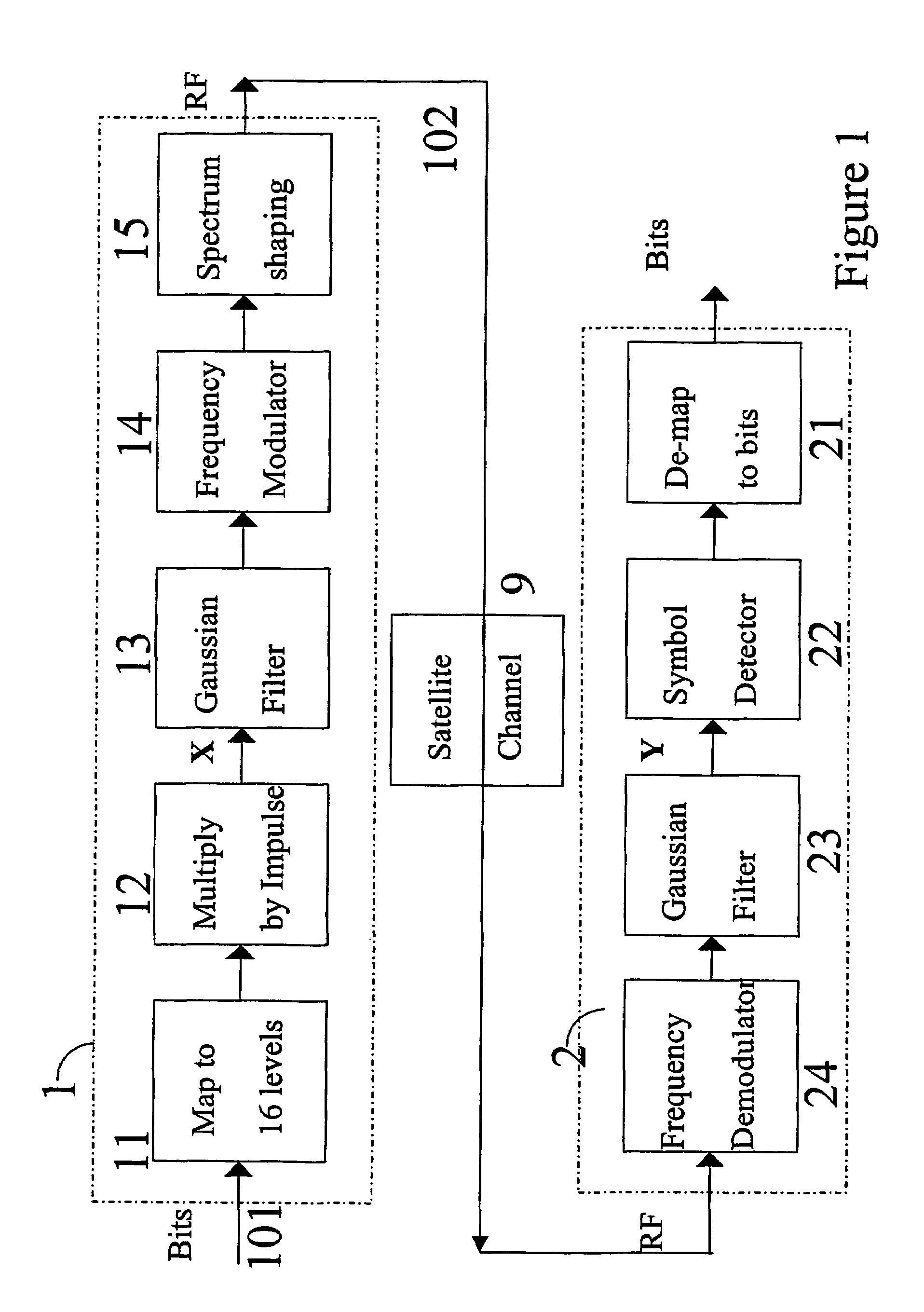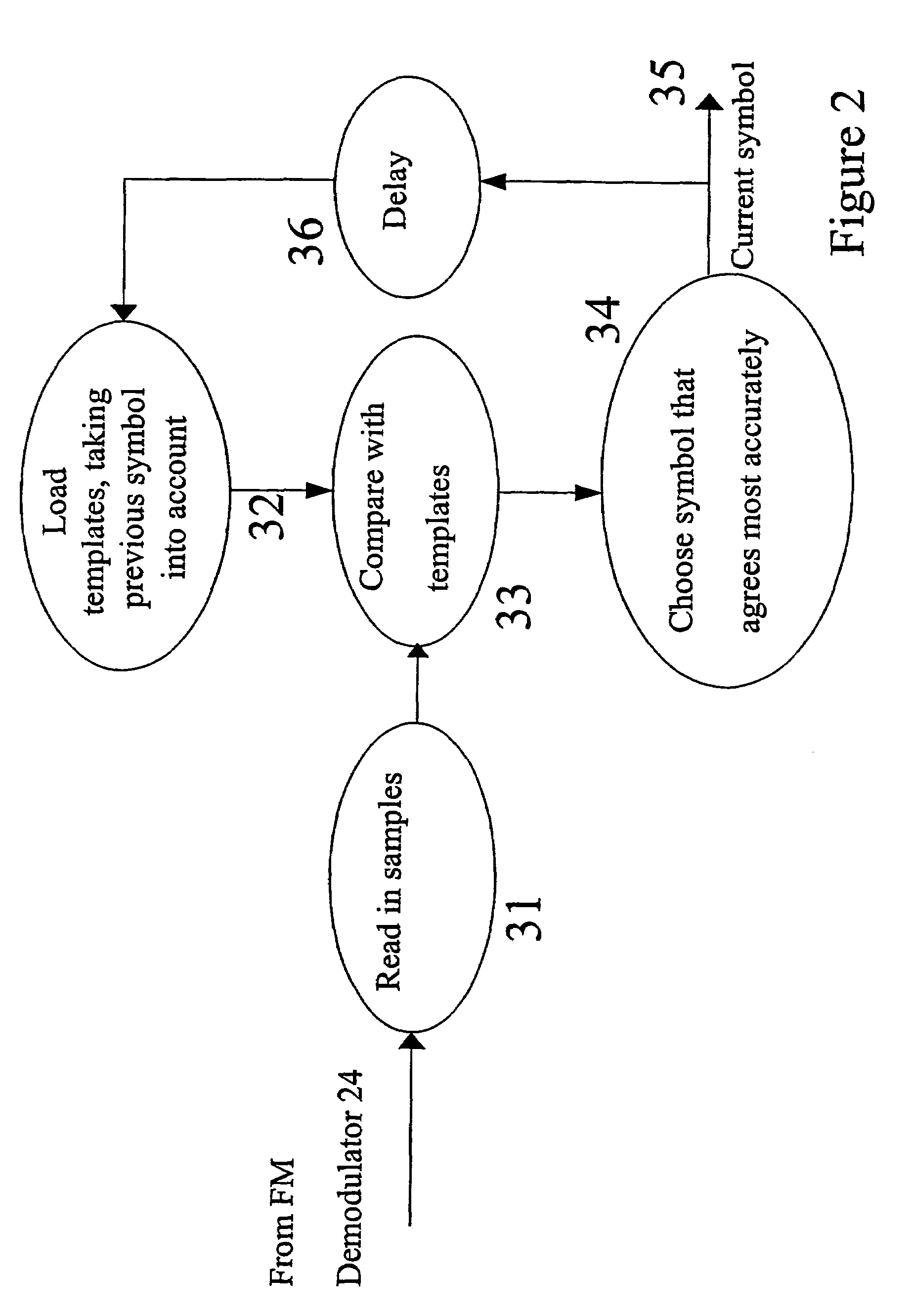Gaussian FSK modulation with more than two modulation states
a modulation state and gaussian technology, applied in the field of data transmission, can solve the problems of limited carrier frequency, limited bandwidth and power, and tight constraints on emissions outside the occupied bandwidth, so as to improve the noise performance and enhance the noise performance of the demodulator
- Summary
- Abstract
- Description
- Claims
- Application Information
AI Technical Summary
Benefits of technology
Problems solved by technology
Method used
Image
Examples
Embodiment Construction
[0030]A general block diagram of the modulation and demodulation processes is shown in FIG. 1.
[0031]The modulator section 1 in the upper part of FIG. 1 begins with a mapping process 11, mapping the input bits 101 to an alphabet of sixteen symbols, which equates to four bits per symbol. The sixteen symbols are represented by different amplitudes symmetrical about zero, for example −7.5, −6.5, −5.5 . . . −0.5, +0.5 . . . +5.5, +6.5, +7.5. These are multiplied by impulses of value 1 (step 12) to produce impulses of −7.5, −6.5 . . . +6.5, +7.5 at the point labelled ‘X’ in FIG. 1, which acts as an input to the filtering process, which uses a Gaussian filter 13. The Gaussian shape of the response to the impulses generated in the previous step 12 has smooth excursions with no negative or oscillatory characteristics. This output is next applied to the frequency modulator 14. This method of modulation is very similar to the scheme used by the GSM cellular telephone system air interface, exce...
PUM
 Login to view more
Login to view more Abstract
Description
Claims
Application Information
 Login to view more
Login to view more - R&D Engineer
- R&D Manager
- IP Professional
- Industry Leading Data Capabilities
- Powerful AI technology
- Patent DNA Extraction
Browse by: Latest US Patents, China's latest patents, Technical Efficacy Thesaurus, Application Domain, Technology Topic.
© 2024 PatSnap. All rights reserved.Legal|Privacy policy|Modern Slavery Act Transparency Statement|Sitemap



